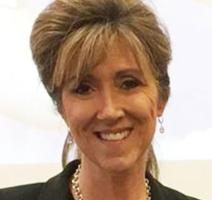 On Tuesday, the 149 passengers on Southwest Airline’s Flight 1380 were shocked when about 20 minutes after takeoff from New York, the plane’s left engine exploded, blowing a hole in the fuselage. The rapid depressurization sucked one woman passenger partially out of the plane. The explosion also damaged the left wing and the flaps.
On Tuesday, the 149 passengers on Southwest Airline’s Flight 1380 were shocked when about 20 minutes after takeoff from New York, the plane’s left engine exploded, blowing a hole in the fuselage. The rapid depressurization sucked one woman passenger partially out of the plane. The explosion also damaged the left wing and the flaps.
The plane, a 737-700, had lost one of its two engines. Not only was the power reduced by half but the thrust, which had been balanced between the two engines, was now coming from only the right side of the plane. The plane immediately went into an uncontrolled left roll of 40 degrees. Fortunately for all aboard, the pilot in command of the plane, brought the plane under control and made an emergency landing at the Philadelphia airport. While, tragically, the woman closest to the explosion died and six others were injured, in the hands of a less skilled pilot, all 149 aboard the plane would have likely died.
Captain Shults is among the only 6.2 percent of commercial pilots in the United States who are women. She is also one of the first females to be trained as a fighter pilot by the US Navy. She was the first woman to fly a US Navy F/A-18 Hornet.
Miltary.com reports that Navy officials released details of Shults’ service Tuesday, revealing that she had risen to the rank of lieutenant commander in the service and eventually served as an instructor pilot for both the EA-6B Prowler and F/A-18 Hornet.
“In regards to the question on whether she was the first female Navy fighter pilot, we can confirm that [Lt. Cmdr.] Shults was among the first cohort of women pilots to transition to tactical aircraft,” Navy spokeswoman Lt. Christina Sears said in a statement.
According to data released by the Navy, Shults received a commission on June 21, 1985, and was promoted to lieutenant commander in December 1995. She left active duty in March 1993 but remained in the Navy Reserve until August 2001.
The Tailhook Scandal
Learning how to fly fighter jets is extremely demanding under the best of circumstances. When Shults and other women were training in the late 80s and early 90s, they also face resistance and hostility from their male instructors and colleagues.
Tammie Jo Shults spoke of some of the challenges she faced as a female Navy aviator. She told the San Antonio Express-News in a 1997 interview of training with a “surly F-18 instructor” who believed it “degrading” to have a woman in the cockpit.
“I told him Congress has stated that I am going to be here. If you don’t like that, vote. But when you’re wearing a uniform, your orders are to give me a check ride,”
What would become known as the Tailhook scandal was emblematic of the problems in naval aviation of that era. Parties held at the 35th Annual Tailhook Association Symposium in September of 1991 in Las Vegas, devolved into a drunken bacchanalia. Ultimately, more than 100 United States Navy and U.S. Marine Corps aviation officers were alleged to have sexually assaulted 83 women and 7 men, or otherwise engaged in “improper and indecent” conduct at the event.
The fallout from the Tailhook scandal led to greater opportunities for women in the military. In 1993, women were allowed to fly on combat missions for the first time. The navy also allowed women to serve on a wider range of ships.
First Female Carrier Pilots
By the time these reforms were put in place, Tammie Jo Shults was nearing retirement. Two women who would serve on carriers, however, demonstrated how difficult and dangerous the new service could be. Lt. Kara Spears Hultgreen would become the first female carrier-based fighter pilot in the U.S. Navy. Tragically, she died in 1994, just months after she was certified for combat when she crashed her F-14 Tomcat into the sea on final approach to USS Abraham Lincoln.
Lt. Carey Lohrenz, a colleague of Hultgreen, was also among the first qualified female naval aviators to fly the F-14 Tomcat. Nevertheless, Lohrenz and two other women pilots were subsequently grounded. Lohrenz fought the demotion, charging bias and won. In 1997, after being grounded for two years, an inspector general’s report and Navy evaluation board found that she had been dismissed unfairly and ordered her returned to flying. Lohrenz was quoted as saying, “They could not accept the fact that their macho fighter-jock profession could be done by women.”
Today, 25 years after women were first allowed to fly in combat, there are still very few female pilots in the Navy. The Washington Times reported in 2013, that only about 4 percent of Navy F-18 Hornet and radar-jamming jet pilots were women. They also reported that “female pilots make up 2 percent of the Air Force’s 3,714 fighter and bomber jocks at the rank of lieutenant colonel and below.”

I think the woman in the photo is the dead woman.
Here is Captain Shults
https://www.washingtonpost.com/news/posteverything/wp/2018/04/19/sully-was-just-a-hero-why-label-the-southwest-captain-a-female-pilot/?utm_term=.ac8e6a3505e6
Also the jet engine did not “explode”, a fan blade broke off and caused all the damage.
“Explode” is our stupid news media talking.
Nice, but was it worth it?
Southwest gives payout to those on Flight 1380
https://www.news5cleveland.com/news/national/southwest-gives-5000-checks-to-passengers-on-flight-1380
Both photos are of Tammie Jo Shults, just taken years apart.